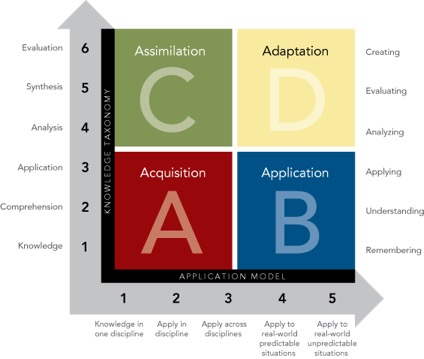In my opinion media is not the message. The key to student
deep learning is through collaboration and well-developed lesson planning. As the
librarian, it will be my job to help teachers plan lessons that focus on the
objective not on the technology being used. If technology is appropriate to make the
learning of a lesson deeper for mastery of the content, then I will help the
teacher integrate the appropriate technology tools. Last week I attended Lone
Star TIA 2017 in North Texas. One of the leading Technology Conferences in the
area. The key note speaker on day two was Eric Sheninger. He discussed “digital
leadership” and what that means in education. During his speech one of the main
points that stuck with me was, “Focus on pedagogy first, and technology second
when appropriate” (Sheninger, 2017). I totally agree with his statement. Using
technology just to use it in the classroom without a real purpose or a well defined
plan is not going to prepare our 21st century learners for the real
world. The teacher must first develop the purpose of the lesson and then decide
if using technology will be appropriate to help produce the end learning objective.
Kozma and Clark debated the use of media in the classroom. I think they both
have great points, but the bottom line is not the media or technology it is the
learning objectives that we want our students to have a deep understanding off.
If media (technology) can help support the learning or make the learning deeper
than it is appropriate to use it in the lesson. If a teacher is just using the
technology in the classroom with the lesson so they can say they used
technology then it will not provide the desired outcome. As a librarian in a
school I can support teachers with developing curriculum that is deep in
meaning, while helping teachers decide which media may help students demonstrate
conceptual mastery of the intended learning outcome (Sheninger, 2016). The SAMR
is a model of teaching and learning technology using the digital blooms by Dr.
Ruben Puentedura (Common Sense Media). Substitution is where a tech tool substitutes
for a regular tool to complete a task – using a word doc instead of paper and
pencil. Augmentation is where tech acts as a tool substitute with a functional
improvement, such as using spell, grammar checks within a word processing
program. Modification allows a tech tool to redesign a task, such as a google
doc that can be shared and feedback given. Redefinition uses tech for creation
of new tech previously inconceivable – transforming an essay or story into a
media video by using an app. Daggett (2014) helped transform the SAMR in to the
Rigor/Relevance Framework. The framework is a two-dimensional framework based
on higher standards and student achievement.
The four quadrants focus on rigor and relevance to students
learning. The rigor side focuses on higher order thinking, while the relevance side
focuses on the real-world application. Combining the two dimensions together
helps educators produce the best learning experience for the students, which in
turn will produce higher achievement. As a librarian, the key to success of
integrating technology appropriately will be collaboration, which will also be
one of the biggest challenges. Working with teachers to create the best lesson to teach an objective while considering what the end product that is desired will be.
Then as the technology specialist for the campus I can make technology tool
suggestions that properly pair with the lessons objective and assessment needs. So, in conclusion
Media is not the message. Pedagogy is the main focus in education and media is
one of the tools that can be used to increase student achievement and higher-level
thinking skills. Keeping the focus of why we (educators) are doing what we are doing is
essential for continued growth in our schools and communities.
Reference
Common Sense Media. Introduction to SAMR model. Retrieved
from https://www.commonsensemedia.org/videos/introduction-to-the-samr-model#
Daggett, W. (2014). Rigor
/ relevance framework: a guide to focusing resources to increase student
performance. Retrieved from http://www.leadered.com/pdf/Rigor_Relevance_Framework_2014.pdf
Edutech Wiki. (2012). The
media debate. Retrieved from http://edutechwiki.unige.ch/en/The_media_debate
Sheninger, E. (April 25, 2016). Why pedagogy first, tech
second stance is key to the future. EdTech.
Retrieved from https://edtechmagazine.com/k12/article/2016/04/why-pedagogy-first-tech-second-stance-key-future
Sheninger, E. & Kieschnick, W. (May 6, 2016). How to
integrate Google apps with the rigor relevance framework. Ed Tech. Retrieved from https://edtechmagazine.com/k12/article/2016/05/how-integrate-google-apps-rigor-relevance-framework

No comments:
Post a Comment